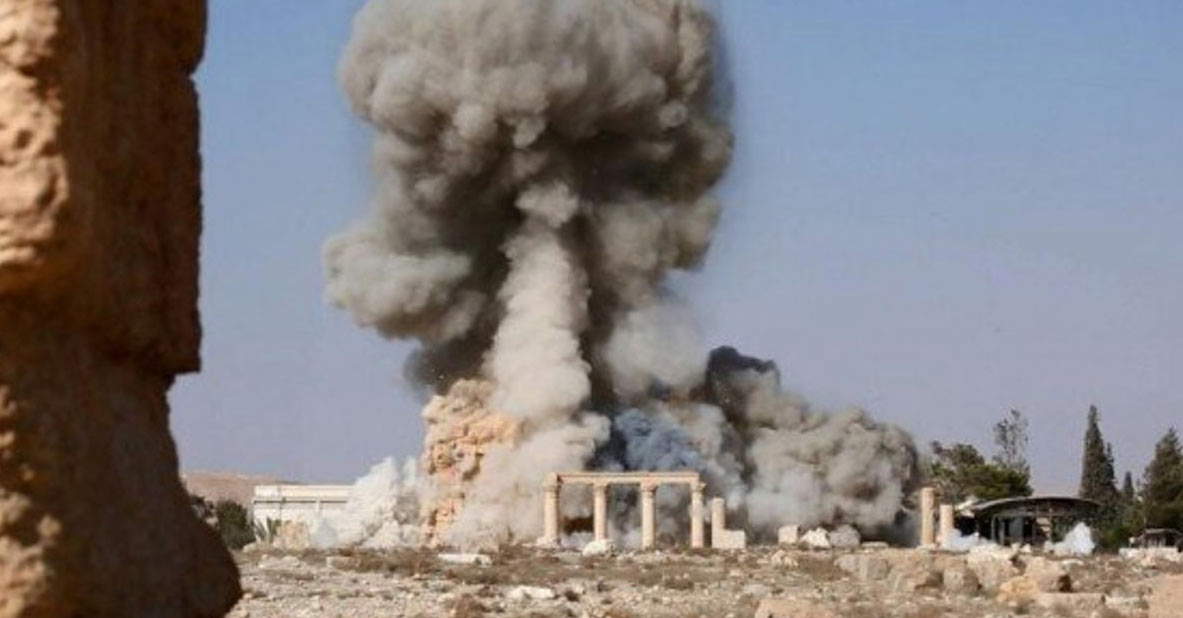The destruction of cultural property during wars: what can the international community do?
This contribution was originally published in issue 6 of Finestre Sull’Arte on paper (June-July-August 2020).
There is only one thing the international community can do today, if it does not want to continue to be indignant about the destruction and looting when the irreparable has already happened, and then spend immense resources on restoration and reconstruction in the post-conflict phases-a luxury that we will be able to afford less and less in the future, and which in any case does not achieve the primary purpose of respecting the heritage, risking instead to reduce it to a series of beautiful and very expensive “fakes.”
To achieve authentic safeguarding, which has been envisioned by the UNESCO Conventions since 1954, it is essential to act long before the event, that is, “from peacetime,” not only with security plans and digital inventories, but with activities constant training and education, based on shared manuals, which must involve personnel both military and civilian, governmental and non-governmental; and we must do this (in an indispensable logic of priority and sustainability) starting with the most important and recognized sites, i.e., those inscribed in the various UNESCO Lists and Registers.
To be even more concise and clear in addressing such a complex issue, I will simply say that the time has come to fully and effectively implement the 1999 Hague Protocol II, recognizing a strong coordinating role for UNESCO’s “1999 Hague Protocol Committee” and the main international Organizations that are its partners and technical advisors, starting with International Blue Shield, International Red Cross, ICCROM and IIHL.
 |
| Isis devastation in Palmyra in 2015. |
The guidelines of the Protocol, which we worked on for three years in Paris between 2006 and 2009, are still little known and even less implemented at the national level, just as was the case in the early years for the similar procedures of the World Heritage Convention (Paris, 1972). With these, as well as with those of the 2003 Intangible Heritage Convention and the other thematic and regional instruments (for Europe, the 2005 Faro Convention), greater coordination or at least some form of synergy would be essential.
There is also an urgent need for an update of the technical modalities of using the symbol or alternative signaling, since the remote visual signaling with the “Blue Shield,” which can only serve the occupation troops operating in the territory adjacent to the monument site, is now completely anachronistic; at least for properties of the highest importance, it would therefore be desirable to go far beyond the simple signal placed “at the entrance of the immovable cultural property” or on the perimeter of the monument center, adopting, for example, modalities similar to those provided for in the Additional Protocols to the Geneva Conventions of 1977, i.e., electronic and digital technologies, radio or radar signals, or light signaling systems.
Very few countries have actually committed themselves to the concrete implementation of the 1954 Hague Convention and its two Protocols, particularly the 1999 one; much has been delegated to UNESCO, which, however, due to its legal nature and operational (and financial) limitations, unfortunately has never been and cannot be today the appropriate entity to carry out this very difficult task.
On the other hand, neither nation-states nor UNESCO itself have ever done much to support Blue Shield International in its first steps, which since its long, arduous and complex founding phase (1996-2006) and then also in its first years of operation, has had to struggle not only with its own obvious institutional and organizational limitations (as ICOM, ICOMOS, ICA and IFLA still struggle to find a common, credible and sustainable modus operandi ), but also with substantial ostracism from the international community, which by continuing to chase other more or less realistic hypotheses and modalities (suffice it to mention the so-called “Blue Helmets of Culture” or the Unite4Heritage program) has not yet shown that it recognizes in the new cultural NGO that “Red Cross of Cultural Heritage” that we have all been waiting for more than a century.
Warning: the translation into English of the original Italian article was created using automatic tools. We undertake to review all articles, but we do not guarantee the total absence of inaccuracies in the translation due to the program. You can find the original by clicking on the ITA button. If you find any mistake,please contact us.




























